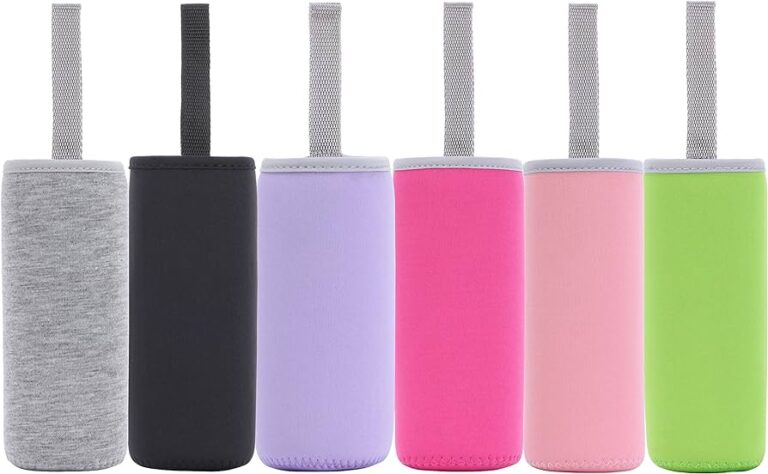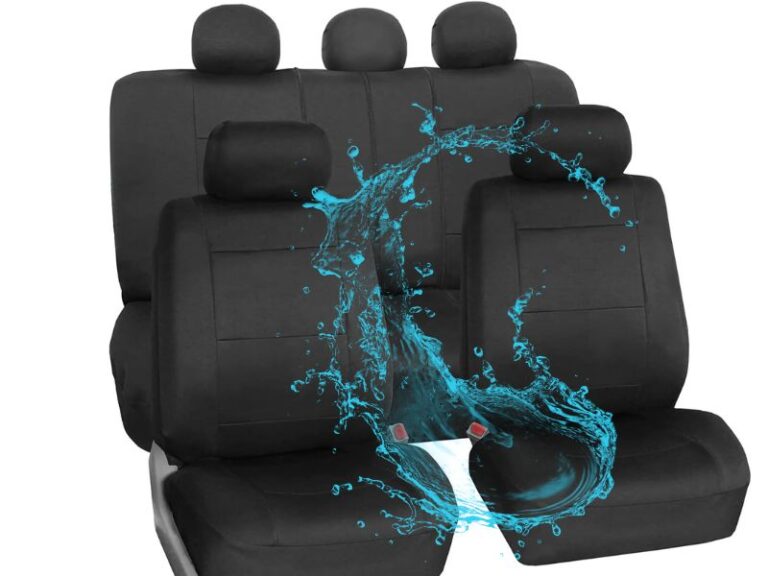Discover the Varied Grades of Neoprene and Unlock Its Power
Yes, there are different grades of neoprene available in the market. Now, let’s dive into a detailed introduction about the various grades of neoprene.
Neoprene is a versatile synthetic rubber material known for its excellent durability and resistance to various elements such as water, oil, and chemicals. It is widely used in industries like automotive, sporting goods, and medical applications. Neoprene is manufactured in different grades, each designed for specific purposes.
These grades vary in terms of their physical properties, thickness, and overall quality. Depending on the intended application, you can choose from standard or commercial grades for everyday use, or opt for specialty grades offering enhanced features such as flame resistance, oil resistance, or low-temperature flexibility. Understanding the different grades of neoprene can help you select the right material for your specific needs.
Key Properties Of Neoprene
Neoprene is a versatile material with various grades available, each offering unique properties and characteristics. One of its key attributes is exceptional durability and longevity, making it a popular choice for various applications. Neoprene exhibits outstanding flexibility across a wide range of temperatures, ensuring optimal performance in both hot and cold environments. Its chemical and water resistance qualities further enhance its value, making it suitable for use in wet or corrosive conditions. Additionally, neoprene demonstrates resistance to degradation from sun and ozone exposure, ensuring long-lasting performance even in outdoor applications.
Understanding Neoprene Composition
Neoprene is a synthetic rubber that is widely used in various industries due to its excellent insulation and flexibility properties. It is essential to understand the composition of neoprene to determine the quality and performance of the material.
| Polychloroprene Origins and Synthesis |
|---|
| Neoprene is synthesized through the polymerization of chloroprene, a liquid monomer derived from acetylene. The process involves combining chloroprene with various catalysts to create a polymer chain resulting in a solid rubber-like material. |
Raw materials used during the synthesis process directly impact the quality of neoprene. Factors such as the purity of chloroprene, presence of impurities, and the consistency of catalysts greatly influence the final product’s characteristics.
Neoprene is available in different grades, each offering unique properties and suitability for specific applications. Higher-grade neoprene typically exhibits greater tensile strength, resistance to temperature extremes, and durability. These grades are often utilized in demanding industries such as automotive manufacturing, marine applications, and medical equipment.
On the other hand, lower-grade neoprene may have slightly reduced performance but is still suitable for less demanding applications, such as gaskets, wetsuits, and consumer products.
In summary, the composition and quality of neoprene play a crucial role in determining its grade and corresponding characteristics. Understanding these factors is essential when selecting the most suitable neoprene grade for specific applications.
Evaluating Neoprene Grades For Your Needs
In the world of neoprene, it’s important to understand that there are indeed different grades available to meet various needs. Evaluating these grades involves comparing both physical and chemical properties. When selecting a grade, it’s crucial to consider the environmental conditions it will be exposed to and match the grade accordingly. For instance, applications that require resistance to oil, grease, or other chemicals may benefit from a grade with excellent chemical resistance. Additionally, specialized industries such as automotive, construction, or diving may have specific requirements that necessitate a particular grade of neoprene. By carefully assessing the physical and chemical properties of different neoprene grades and matching them with the appropriate environmental conditions and industry-specific needs, you can ensure that you choose the grade of neoprene that best suits your requirements.
Customization Of Neoprene Products
When it comes to neoprene products, customization plays a crucial role in tailoring them for specific applications. Neoprene, a versatile synthetic rubber, offers various options for customization to meet specific requirements.
Tailoring Neoprene For Specific Applications
Neoprene can be customized in terms of thickness, density, and hardness to suit different needs. Whether it’s for wetsuits, protective gear, or insulation purposes, tailoring the neoprene material ensures optimal performance in specific applications. Manufacturers can modify neoprene by using different combinations of polymers and additives to achieve desired characteristics.
Surface Treatments And Finishing Options
In addition to material customization, neoprene products can also be enhanced through surface treatments and finishing options. This includes options like laminating, embossing, and printing, which add functionality and aesthetics to the final product. These surface treatments improve durability, grip, and visual appeal, depending on the intended use.
Overall, the customization of neoprene products allows for versatility and adaptability in a wide range of industries, such as sports, healthcare, and industrial applications. Manufacturers and consumers can benefit from exploring the different customization options available to maximize the performance of neoprene products.
Neoprene Maintenance For Optimal Performance
Keeping your neoprene products clean and well cared for is crucial to ensure they maintain their optimal performance and longevity. Neglecting proper maintenance can result in premature degradation and reduced effectiveness. Here are some best practices for cleaning and caring for neoprene.
- Cleaning: Regularly rinse your neoprene items with fresh water after each use to remove salt, sand, and other debris. Use a mild soap or neoprene cleaner to gently scrub away any stubborn stains. Avoid using harsh chemicals or abrasive materials that can damage the fabric.
- Drying: Let your neoprene gear air-dry away from direct sunlight. Avoid using heat sources such as radiators or dryers, as excessive heat can cause the neoprene to deteriorate.
- Storage: Store your neoprene items flat or hanging in a cool, dry place away from direct sunlight. Folding or creasing the material for extended periods can lead to permanent damage.
- Longevity Tips: To extend the lifespan of your neoprene products, avoid exposing them to excessive heat, chemicals, saltwater, and sharp objects. Additionally, consider applying a neoprene protectant or conditioner regularly to maintain flexibility and guard against degradation.
By following these cleaning and care best practices, you can ensure that your neoprene products remain in top condition, providing you with long-lasting performance and enjoyment.
Real-life Success Stories Using Neoprene
Neoprene, a versatile synthetic rubber material, has gained popularity due to its exceptional properties and numerous applications across industries. In the marine sector, neoprene has proven its durability and resistance to saltwater, making it an ideal material for wetsuits and diving gear. Real-life success stories include divers exploring breathtaking underwater worlds without feeling restricted or cold due to the superior insulation properties of neoprene.
In the automotive industry, neoprene is utilized for various components, including gaskets and seals. Its impressive resistance to exposure to oils, fuels, and extreme temperatures ensures the longevity and reliability of automotive systems. Neoprene’s ability to maintain its flexibility and strength in harsh conditions makes it suitable for demanding applications.
Neoprene’s innovative uses extend beyond industrial sectors, finding a place in consumer products as well. From laptop sleeves and phone cases to orthopedic supports and fashion accessories, neoprene offers excellent protection, cushioning, and elasticity. Its water-resistant properties also make it the material of choice for swimwear and water sports gear.
Frequently Asked Questions On Are There Different Grades Of Neoprene?
Are There Different Grades Of Neoprene?
Yes, there are different grades of neoprene, which vary based on their intended use and performance characteristics. Neoprene can range from general-purpose grades suitable for everyday applications to specialized grades designed for specific industries like diving or industrial insulation. The specific grade of neoprene chosen depends on factors such as flexibility, chemical resistance, and durability.
What Are The Performance Characteristics Of Neoprene?
Neoprene is known for its excellent resistance to weathering, ozone, and UV rays. It offers good flexibility over a wide temperature range, making it suitable for both hot and cold environments. Neoprene also exhibits high tensile strength, tear resistance, and chemical stability.
Additionally, it provides good electrical insulation properties and is resistant to aging, oil, and grease.
Can Neoprene Be Used In Water-related Applications?
Yes, neoprene is often used in water-related applications due to its excellent water resistance and buoyancy properties. It is commonly used in wetsuits, drysuits, gloves, boots, and other water sports gear. Neoprene’s ability to insulate and retain body heat also makes it ideal for cold water activities.
What Are The Advantages Of Using Neoprene?
The advantages of using neoprene include its excellent durability, flexibility, and resistance to weathering and chemicals. Neoprene is also known for its excellent insulation properties, which make it suitable for both thermal and electrical applications. It is easy to work with, can be bonded to other materials, and provides good cushioning and shock absorption.
Conclusion
Overall, it is clear that there are indeed different grades of neoprene available in the market. The choice of grade depends on the specific requirements of the application. Whether you need neoprene for wetsuits, industrial applications, or even orthopedic supports, understanding the different grades can help ensure you choose the right material for the job.
By considering factors such as thickness, quality, and durability, you can make an informed decision that meets your needs.
- Can I Get in a Taxi Without a Car Seat? - January 26, 2025
- Can I Get Chlamydia From a Toilet Seat? - January 26, 2025
- Can I Get an Uber With a Car Seat? - January 26, 2025






